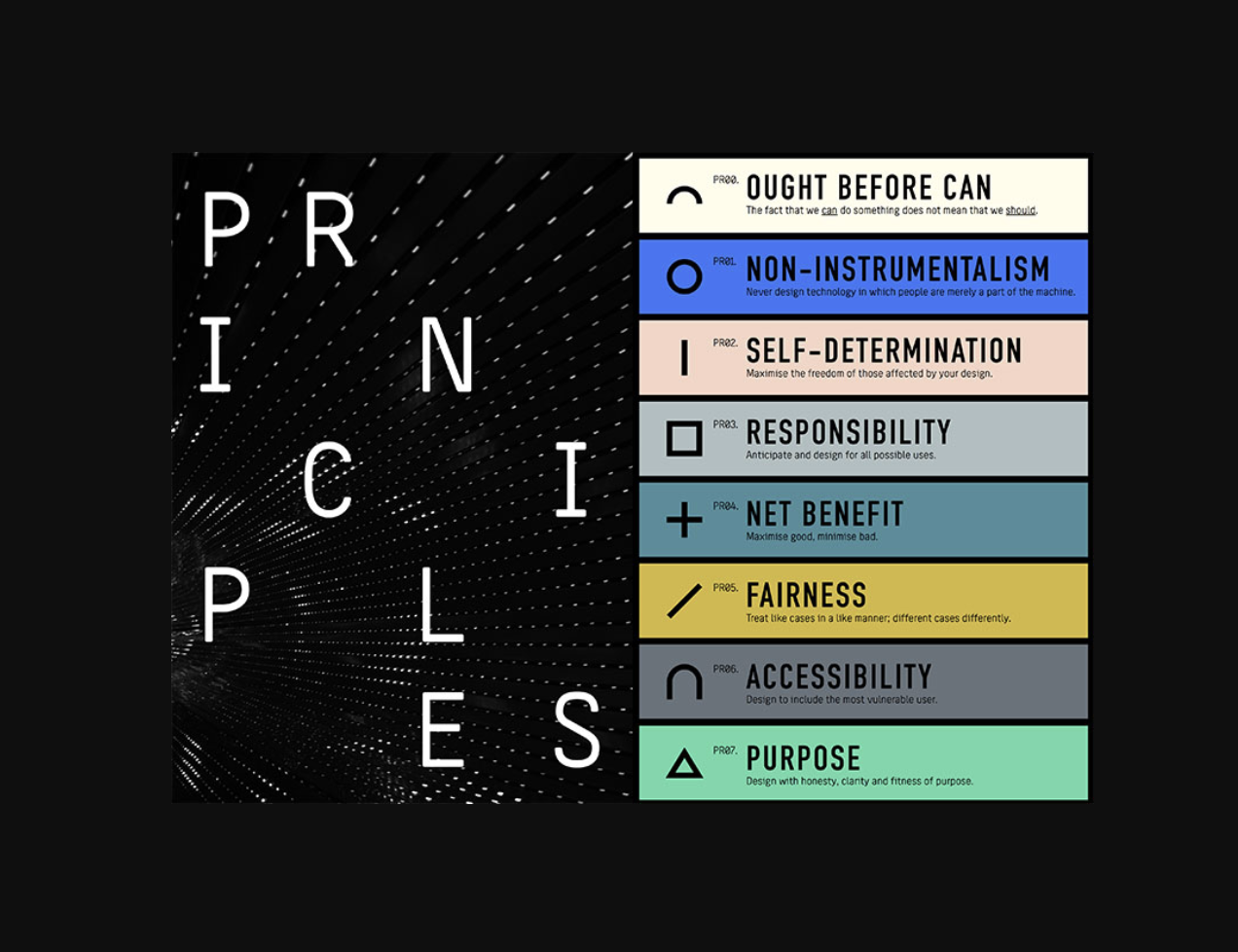Design Ethics
16/04/2024 - 23-04-2024
The introduction to philosophical and ethical considerations in technology via the Design Ethics seminar offered a powerful framework for understanding how deeply our technologies are entwined with our moral fabric. Delving into topics ranging from the neutrality of technology to the responsibilities of designers, this seminar acted as a profound call to assess not only how we create and use technology but also the ethical implications embedded within these processes.
🌐 Technology as a Reflection of Societal Values
One of the central themes from the seminar is the idea that technology is not just a collection of tools but a reflection of societal values and structures. It "shows us what a society, a community, or a group with power values as positive and what is undesirable and should be avoided". This realization demands a rethinking of how we view our creations in technology; they are not neutral but are deeply infused with ideological underpinnings.

🔄 Technology and Design: Agents of Change
The seminar emphasized the dual role of technology and design as agents of change. Technology does not merely exist; it acts. It has the power to shape and be shaped by society interactions and cultures. This dynamic is a central key in the understanding of the ethical dimensions of technology. As technology molds society, it shapes our values and priorities, often amplifying inequalities.

🧩 Ethical Design: Practical aplication to my masterst thesis
The ethics surrounding my project that uses AI to preserve and teach traditional craftsmanship are complex and multifaceted. At its core, the project is laudable for its effort to keep these ancient skills alive, promoting cultural heritage and diversity in a globalized world. However, it also brings up important questions about the authenticity of learning crafts through digital means. Can AI truly capture and replicate the nuanced skills of human artisans? Additionally, there are critical considerations about fair compensation and recognition for the artisans whose expertise is digitized. Issues of consent and the ownership of cultural knowledge also arise, especially for traditions that belong to indigenous or local communities and may not be owned by individuals. While the project is forward-thinking, it must carefully address these ethical concerns to ensure it serves the communities involved respectfully and does not unintentionally commercialize or misuse cultural heritage.